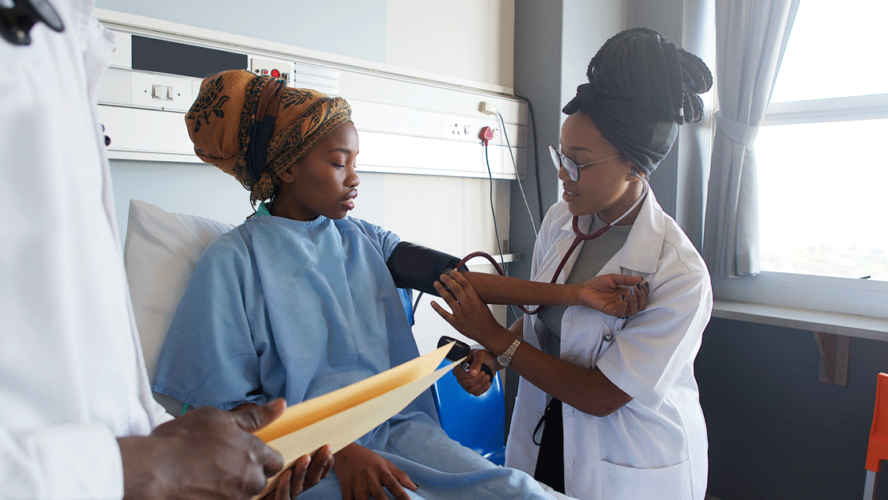
Ann-Lise Mikolajczak
Manager, Global Health and Access, IFPMA
In the wake of COVID-19, lower-resource settings need sustainable healthcare more than ever to build back better. Promising solutions are at hand.
Each year, 41 million people die from heart disease, cancer, diabetes and chronic respiratory diseases.1 This group of chronic diseases, called non-communicable diseases (NCDs), burden health systems and put people at increased risk of other illnesses such as COVID-19.
Sadly, NCDs disproportionately affect people in parts of the world with limited access to health services.2 Tried and tested solutions should be leveraged to strengthen health systems to prevent, diagnose and treat them in a timely way.3
Tailored health packages
Cost-effective packages of health interventions4 could help support low- and middle-income countries reduce premature mortality by one third by 2030, one of the global goals to which countries have committed.
For example, the upfront costs of diabetes management – such as glycaemic control, footcare, and screening and treatment of kidney disease – are high. However, these are associated with considerable health and socioeconomic benefits when combined with cardiovascular disease prevention throughout the life-course.5
Cost-effective packages of health interventions could help support low- and middle-income countries reduce by one third premature mortality from NCDs by 2030, one of the global goals to which countries have committed.
Streamlining patient care by supporting a ‘one stop shop’ for daily disease management is another approach. Launched in 2020, the PATH-led CarePak initiative, which bundles diabetes treatment, consumables and educational material, has positively impacted health outcomes in Kenya, Mali, Mozambique and Tanzania.
Integrated care
Integrated care at primary healthcare level, such as screening and treatment of multiple diseases at the same point of care, is a powerful model for leveraging scarce healthcare resources. One initiative looking to optimise limited resources is Sanofi’s Diabetes and Hypertension clinics,6 which detect, treat and manage the two conditions.
So far, this initiative has trained over 1,200 healthcare professionals and treated more than 50,000 patients in Cameroon, Côte d’Ivoire and Senegal. More integrated care models tailored to local needs should be developed.
[1] https://www.who.int/news-room/fact-sheets/detail/noncommunicable-diseases
[2] Ibid
[3] https://digitallibrary.un.org/record/710899/?ln=en
[4] NCD Countdown 2030: efficient pathways and strategic investments to accelerate progress towards the Sustainable Development Goal target 3.4 in low-income and middle-income countries. Dr David Watkins et al. Lancet 2022; 399: 1266–78. DOI: https://doi.org/10.1016/S0140-6736(21)02347-
[5] Ibid
[6] https://globalhealthprogress.org/collaboration/diabetes-and-hypertension-clinics-in-sub-saharan-africa/

